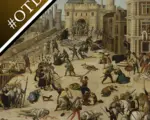
On this day in Tudor history, 24th August, Cecily, Viscountess Welles, or Cecily of York, third daughter of Edward IV, died, and thousands of French Huguenots were brutally murdered in the St Bartholomew’s Day massacre…
[Read More...]
On this day in Tudor history, 24th August, Cecily, Viscountess Welles, or Cecily of York, third daughter of Edward IV, died, and thousands of French Huguenots were brutally murdered in the St Bartholomew’s Day massacre…
[Read More...]
On this day in Tudor history, 18th August 1572, the marriage of Henry III, King of Navarre (the future Henry IV of France), the leading Huguenot, and the Catholic Margaret of Valois took place at Notre Dame Cathedral in Paris. The aim of this marriage was to unite the Bourbon and Valois families, and also to bring peace between the Catholics and Huguenots in France. However, the awful St Bartholomew’s Day Massacre of the Huguenots took place just six days after the wedding.
[Read More...]
On this day in Tudor history, 18th February 1563, a Huguenot assassin shot Francis, Duke of Guise, at Orléans in France. The duke died six days later.
The Catholic Guise was a prominent leader during the French Wars of Religion, and there had been attempts on his life previously. Guise was wounded by Huguenot, Jean de Poltrot de Méré, at the Siege of Orléans, and it is thought that the treatment he received from his physicians, bloodletting, contributed to his death.
[Read More...]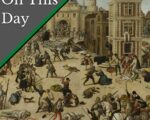
On this day in Tudor history, 24th August 1572, in the reign of Queen Elizabeth I, on the Feast of St Bartholomew, an awful massacre took place across the Channel in the city of Paris. It was followed by further atrocities in other towns and cities in the country.
Those who suffered were Huguenot men, women and children, French Protestants.
But what happened and why?
[Read More...]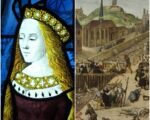
On this day in Tudor history, 24th August 1507, Cecily of York, Viscountess Welles, died at Hatfield in Hertfordshire. She was buried at “the friars”.
Cecily was, of course, the daughter of King Edward IV and his queen consort, Elizabeth Woodville, and the sister of Elizabeth of York and the Princes in the Tower, but there’s far more to her than that.
Did you know that she married without permission and had to be sheltered by Lady Margaret Beaufort?
Find out all about Cecily of York’s life…
[Read More...]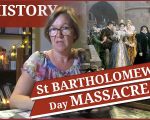
On this day in Tudor history, 24th August 1572, on the Feast of St Bartholomew, an awful massacre too place in Paris, and it was followed by further atrocities in other towns and cities.
Those who suffered were Huguenot men, women and children, French Protestants. But what happened and why?
I explain all in today’s video…
[Read More...]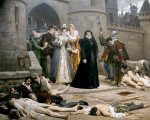
On this day in 1572, the St Bartholomew’s Day Massacre took place. An estimated 3,000 French Protestants (Huguenots) were massacred in Paris, and a further estimated 7,000 in the provinces.
[Read More...]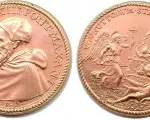
Pope Gregory XIII ordered a joint celebration or commemoration on 11th September 1572 for the defeat of the Ottoman troops by the Holy League at the Battle of Lepanto on 7th October 1571, and for the St Bartholomew’s Day Massacre of the Huguenots in France, in August 1572.
[Read More...]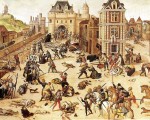
On this day in 1572, the St Bartholomew’s Day Massacre took place. An estimated 3,000 French Protestants (Huguenots) were massacred in Paris, and a further estimated 7,000 in the provinces. According to tradition, Catherine de’ Medici persuaded her son, King Charles IX of France, to order the assassination of key Huguenot leaders who had gathered in Paris for the wedding of their leader, Henry of Navarre, to Margaret of Valois, the King’s sister.
[Read More...]
Primary source accounts of the 1572 St Bartholomew’s Day Massacre.
Eye witness account, written by historian Jacques Auguste de Thou:
So it was determined to exterminate all the Protestants and the plan was approved by the queen. They discussed for some time whether they should make an exception of the king of Navarre and the prince of Condé. All agreed that the king of Navarre should be spared by reason of the royal dignity and the new alliance. The duke of Guise, who was put in full command of the enterprise, summoned by night several captains of the Catholic Swiss mercenaries from the five little cantons, and some commanders of French companies, and told them that it was the will of the king that, according to God’s will, they should take vengeance on the band of rebels while they had the beasts in the toils. Victory was easy and the booty great and to be obtained without danger. The signal to commence the massacre should be given by the bell of the palace, and the marks by which they should recognize each other in the darkness were a bit of white linen tied around the left arm and a white cross on the hat.
